Xiamutang, China
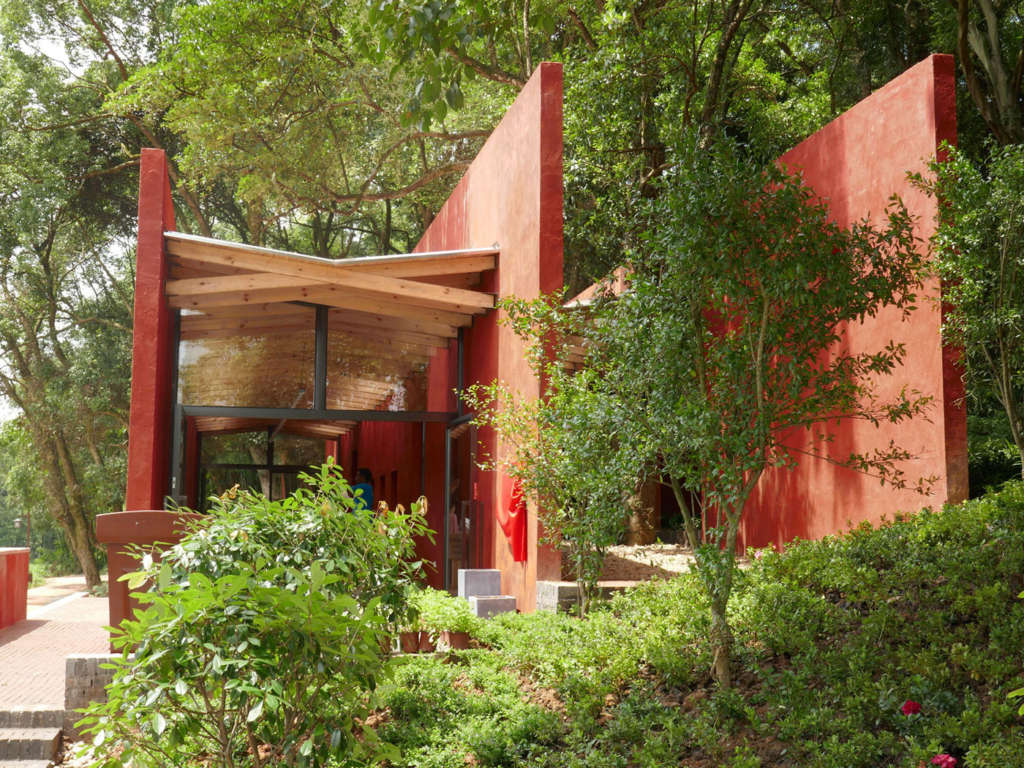
The following description is courtesy of The Scarcity and Creativity Studio.
China’s explosive growth has been fueled by a large rural tour ban migration which has left large parts of the countryside depopulated. At present China is losing around 300 rural villages per day and the Chinese government is looking for rural development models capable of preserving rural life, considered the foundation of traditional Chinese culture and values.
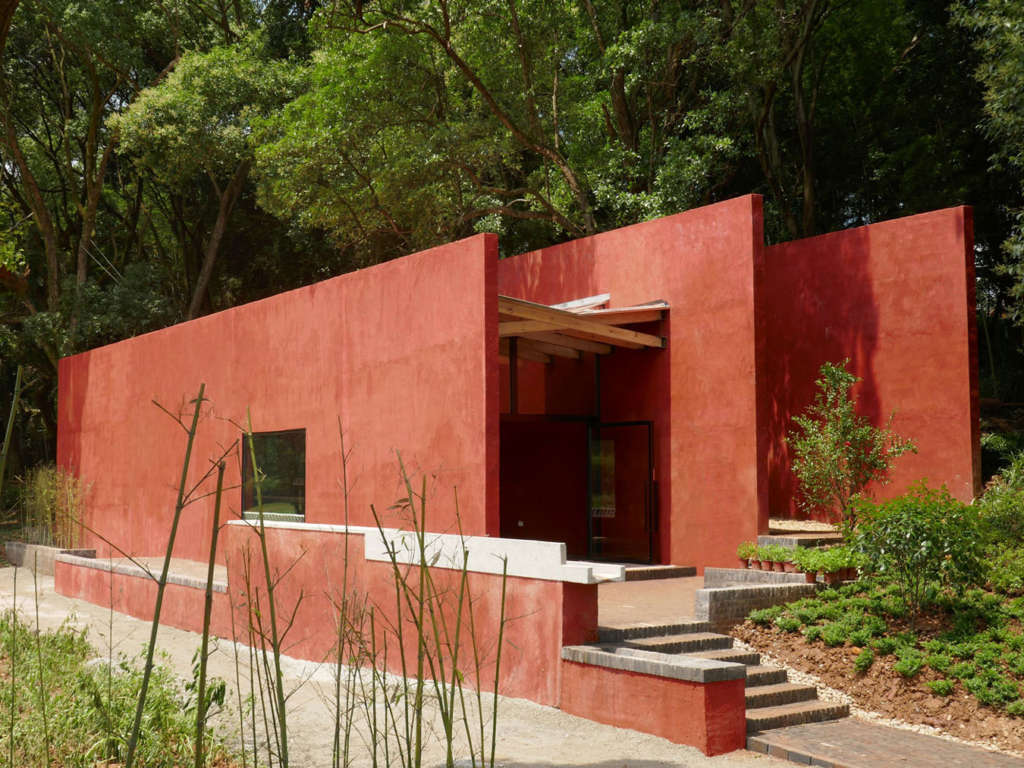
Growing affluence allows an increasing number of Chinese to take holidays and travel within China. Rural villages that are attractive and offer good facilities can hope to find new sources of income from tourism.
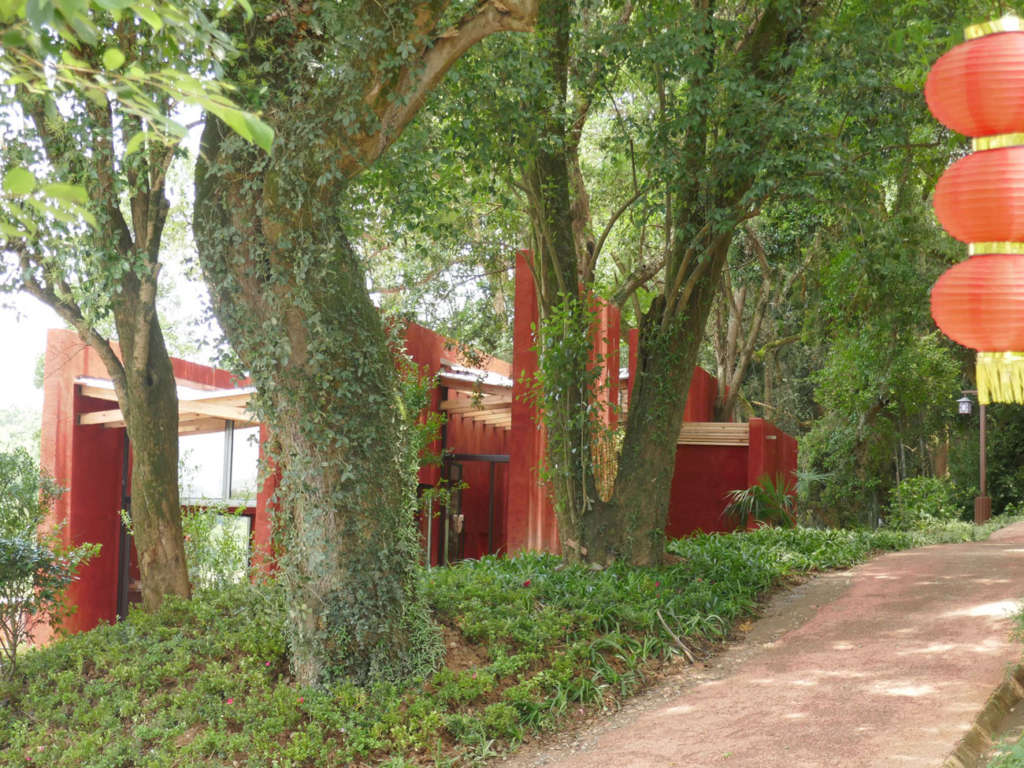
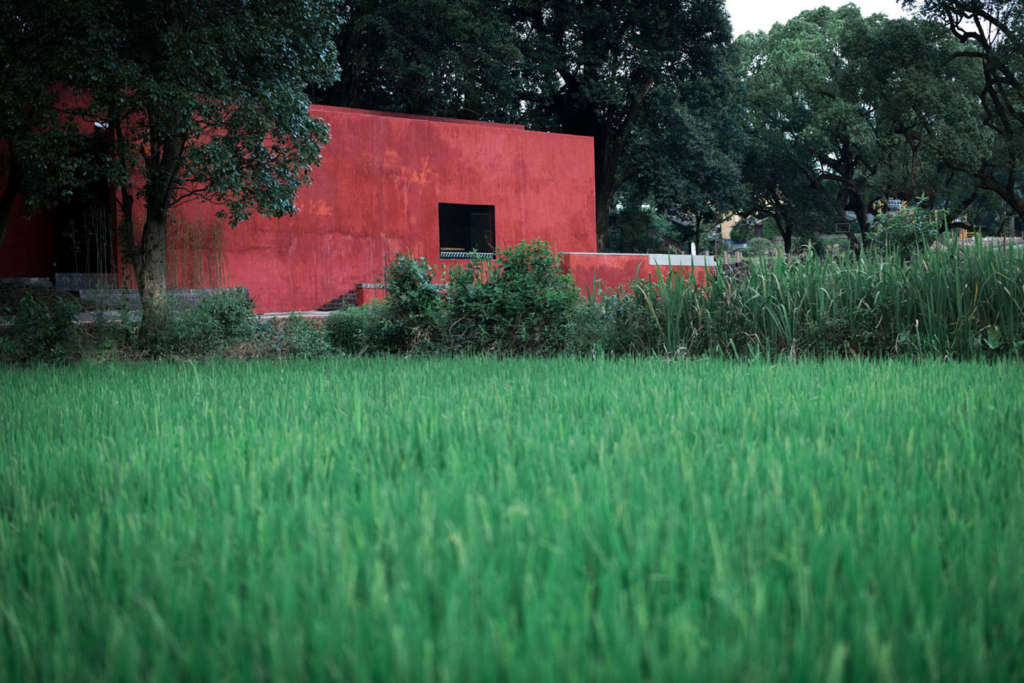
One such village is Xiamutang, located in south-eastern China. The China Building Centre and the Urban Environment Design magazine have taken over its transformation into a children centred attraction. In 2018 they organised an international architectural competition to design and build installations which would appeal to children. Today Xiamutang offers accommodation in rehabilitated farmers’ houses, restaurant, shop, tea-house, bar, and other facilities.

Photo by SCS 
Photo by SCS
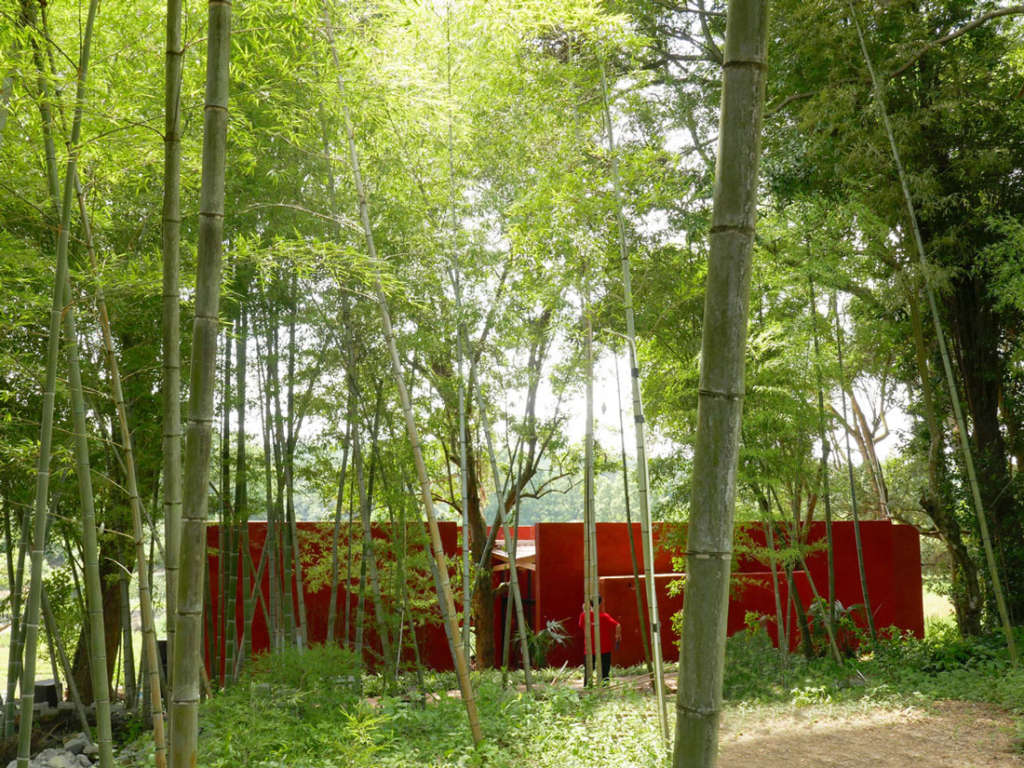
In 2019 AHO’s Scarcity and Creativity Studio (SCS) and Tianjin University’s School of Architecture were invited to design and build a teaching restaurant for children aged 6 to 12 years, that would offer cooking courses consisting in picking vegetables from nearby fields, washing them, preparing them, cooking them, and eating them. The project was developed through experimental, transcontinental cooperation, which involved design, production, and building.
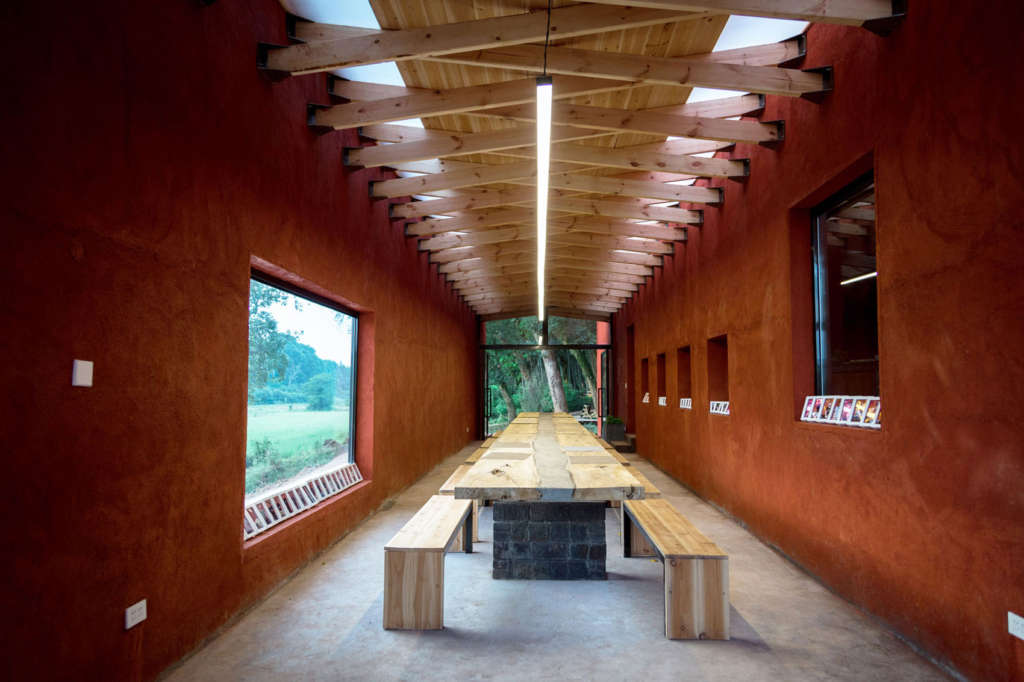
The site for the project is located between the village of Xiamutang and surrounding agricultural fields, on a steep and narrow site containing mature camphor trees. These conditions added to the fact that the site was not much larger than the program to be housed, defined the design concept. Five freestanding parallel walls run along the contours of the site, stepping down to follow the site’s topography. In between these walls are the functions of the building: a store, a kitchen, a dining room, and adjoining external spaces.
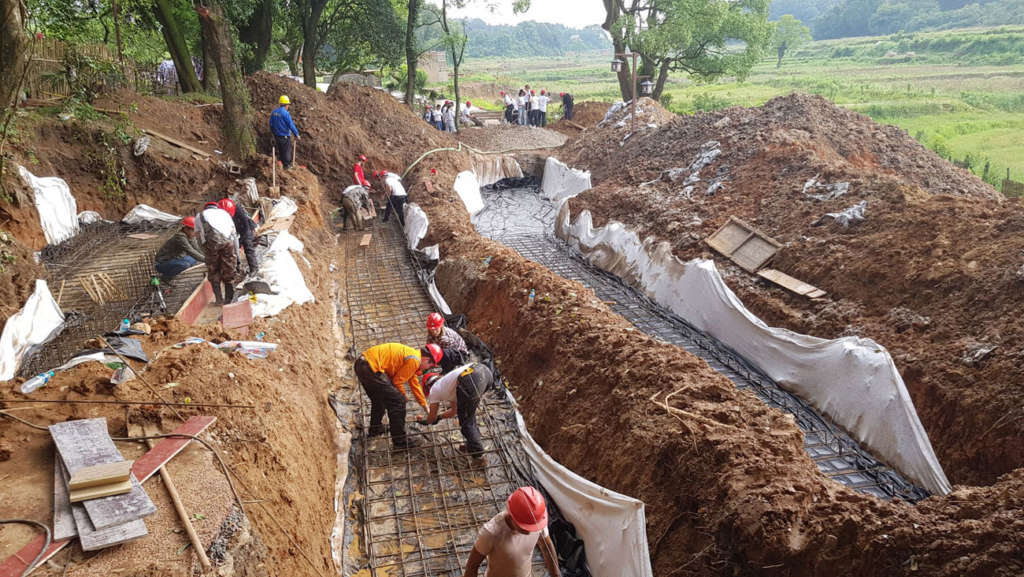
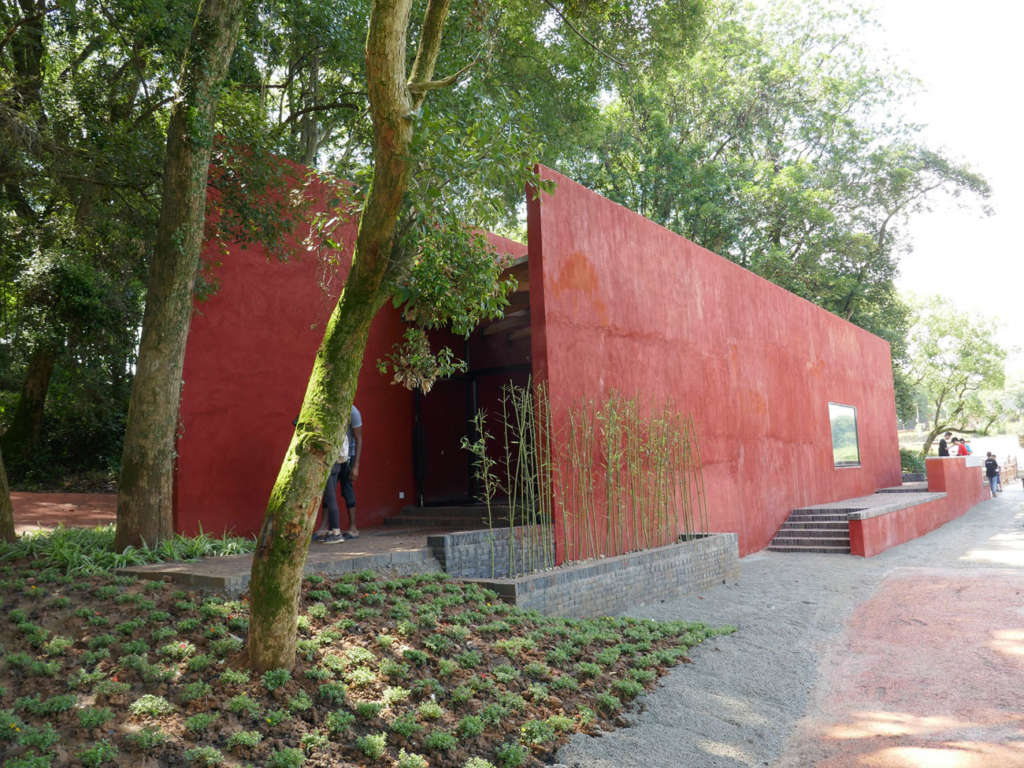
Each wall is free-standing and cantilevering from reinforced concrete foundations on clay soil. The walls are built of hollow concrete blocks with reinforced concrete columns inside. The walls are rendered, inside and out, in sand and white-cement pigmented with ferric oxide, to produce a distinctive ‘Chinese’ red, ubiquitous in historic buildings, such as The Forbidden City in Beijing, and symbolic of happiness in Chinese culture.
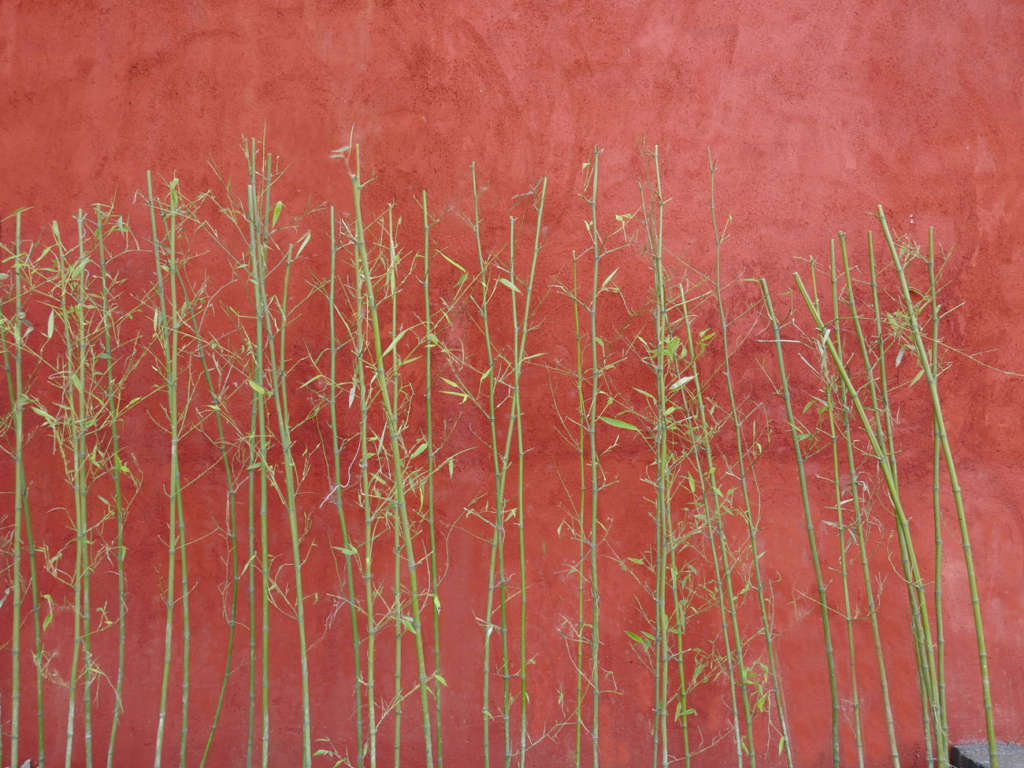
Reinforced concrete slabs, finished in a steel trowelled screed, form the floors. Lighter materials link the walls so as to preserve their design integrity. The roof structure is made of timber‘ crosses’ which result in a roof with a central gutter, and double-layered skylights along each wall. Fully openable glass assemblies close the dining and kitchen spaces at both ends, extending them out into adjoining nature. Outdoor spaces are surfaced in black clay bricks or gravel.

Photo by SCS 
Photo by SCS
The dining table is 9.5 meter long and built from a large fallen tree found on site; with the spaces between the boards filled with reinforced concrete. The kitchen furniture is made from a folded thin reinforced concrete slab with the storage under.

Photo by SCS 
Photo by SCS 
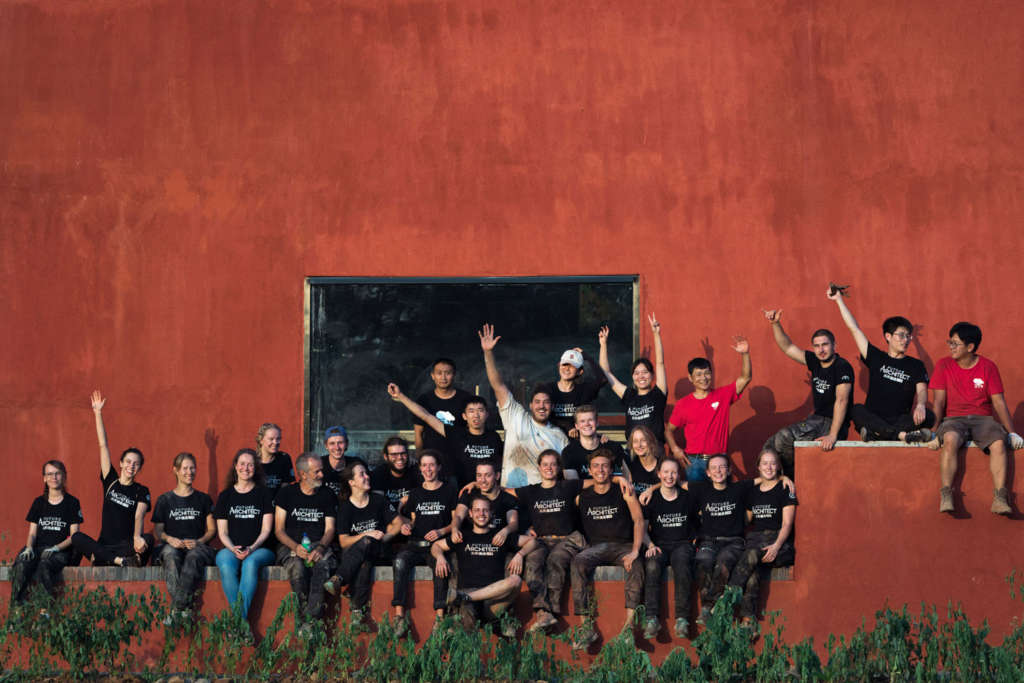
Project Details
Project name: The Walls, Children’s Teaching Restaurant, Xiamutang, China.
Architecture Firm: The Scarcity and Creativity Studio, AHO and Tianjin Univ. School of Architecture
Website: http://scs.aho.no
Contact email: christian.hermansen@aho.no
Completion Year: 2019
Gross Built Area: 140m2
Project location: Xiamutang, China
Project Credits
Staff
AHO: Christian Hermansen, Jan Kazimierz Godzimirski, Solveig Sandness
TJU: 杨崴、王志刚、胡一可、孙德龙、刘向峰
Students
AHO: Thomas Albert Stanislas Barouh, Albert Parera Sánchez, Clemens Pörtner, Julien Pierre Claude Palisse, Angel Andres Fernandez,Mar Bartolomé Narbón, Maria Tarruellai Serra, Silje Charlotte Damhaug, Anne Sofie Solberg, Alexander Karim Tamer Minge Salim, Olav Bog Vikane, Pia Straumsnes Tangen, Aino Sofia Hakulinen, Drenusha Blakcori, Mathilde Grindland, Iga Masełkowska, Saimi Inkeri Järvinen
TJU: 程婧、李子昂、梁宇轩、刘媛、马培铨、安然、关典、穆柯、史文舒、王润丰、王旨选、杨志祥、颜洁铭、左华华、Simon Ondrej, Boramy Sina, Milica Dukic, Kezala Jere, Nicholas Rimamnde Yerima, Nesru Mohammed Sewalieh.
Clients: The China Building Centre and Urban Environment Design Magazine
Engineering: Degrees of Freedom, Oslo
Photo credits: SCS











